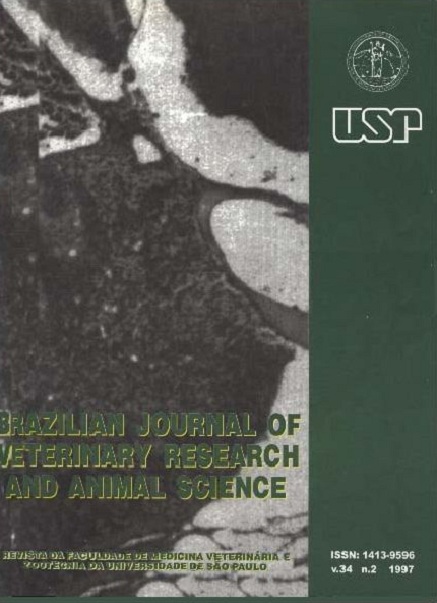Upper Airways Lesions After endotracheal intubation in equines
DOI:
https://doi.org/10.11606/issn.2318-3659.v34i2p92-98Keywords:
Endotracheal intubation, Lesions, EquidaeAbstract
Nowadays, endotracheal intubation in equines is a normal routine in surgery rooms of great Universities, Jockey Clubs, and so forth. It is an invasive procedure, so it presents risks, although its advantages exceed a lot its disadvantages. The will of this experiment was to look for indicating that the endotracheal azode could cause lesions in the equine upper airways tract, as well as its possible consequences. The results were evaluated by the time spend in the surgery, age of equines, the animals breed, weight, sex, number of attempts necessary to intubate, tubes diameter and Cuff’s pressure. The lesions were evaluated by their type and grade there were. No lesion, Light lesion, where there were ecchymoses wich were classified by the intensity of the lesions in (+),(++),(+++). Moderate lesions, where we observed hematomas, that by their grade were (+), (++),(+++). Severe lesions, where we catalogued ulcer, which by their grade were shared in (+),(++),(+++). Lesions like lacerations which were classified in light, moderate and severe; and which, by the grade of lesions correspond to light, (++) moderate and (+++) severe. We also had perforations. Evaluating these results, we observed no differences correlating the appearance of the lesion with tract, as well as its possible consequences the evaluated parameters performed by the applied methodology. Overall results showed that endotracheal intubations in equines caused lesions in the upper airways tract; the lesions found were: ecchymoses, hematomas, ulcerations and lacerations; the most frequent lesion site was Cuff’s place in the trachea; the most frequent lesion was the ecchymosis.Downloads
Download data is not yet available.
Downloads
Published
1997-04-01
Issue
Section
ANIMAL PATHOLOGY
License
The journal content is authorized under the Creative Commons BY-NC-SA license (summary of the license: https://
How to Cite
1.
Freitas RR de, Stopiglia AJ, Silva LCLC da, Fanton DT. Upper Airways Lesions After endotracheal intubation in equines. Braz. J. Vet. Res. Anim. Sci. [Internet]. 1997 Apr. 1 [cited 2024 Apr. 19];34(2):92-8. Available from: https://www.revistas.usp.br/bjvras/article/view/50244





